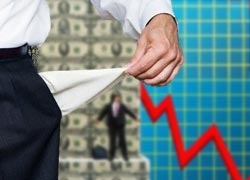


ArmInfo. In January 2018, the tendency of price growth began to appear in the compressed gas and oil products market of Armenia, which was the result of amendments to the Tax Code of the country.
Thus, the cost of liquefied gas, which is fuel for 80% of the country's car park, jumped from 180 AMD to 210 AMD ($ 0.44) per cubic meter, and the price of a liter of gasoline also increased by an average of 30 AMD to 440 per liter ($ 0.91). According to observers, the increase in prices due to the growth of excises is not the limit. The growth trend may continue depending on the situation on international markets, although Armenia now receives the lion's share of motor fuel from Russia under a monopoly contract with Rosneft.
Now excises on compressed gas are 8330 AMD per 1,000 cubic meters. From January 1, 2018, they will grow to 23,000. The excise for a ton of gasoline rose from 25,000 drams to 40,000 drams.
Earlier, ArmInfo informed that the entry into force of amendments to the Tax Code, according to which the rates of indirect taxes are increased, will lead to a general rise in prices on the domestic market of the republic. Moreover, the increase in excises will occur for several years. So, from January 1, 2018 the excise tax on alcoholic beverages will increase from the current 550 drams to 725 drams. In 2019, the rates will rise to 835 drams, in 2020 - to 960, and in 2021 - to 1100 drams. Excise rates on whiskey, rum and other alcoholic beverages have been established since 2018 at the level of 3970 drams, from 2019 - 4,560 others, 2020 - 5250 others, and in 2021 - 6035 drams. Excises on 1000 cigarettes from 2018 will increase to 7275 drams from the current 5500, in 2019 - 8370, in 2020 - 9625, and in 2021 - 11070 drams. The increase in excises is a requirement of the Eurasian Union. Excises will increase until they reach common for other countries EAEU rates. Experts predict a general rise in price of goods and services. There is an opinion that the rise in price of gas and gasoline will lead to an increase in transportation costs and tariffs, and, as a result, increase in the cost price of essential products.